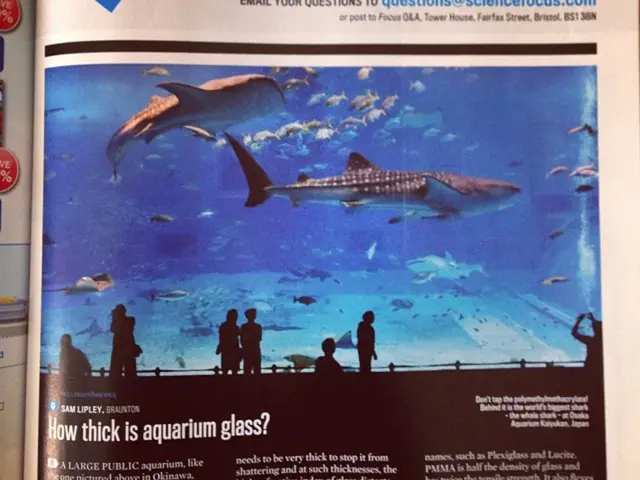Seals Selecting Suitable Icebergs for Hitchhiking: Insights into Harbor Seals' Preferred Travel Companions
Harbor seals along Alaska's coast choose their icy basking spots based on the changing seasons, as revealed in recent studies presented at the American Geophysical Union's annual gathering.
The research centered around harbor seals residing in Glacier Bay National Park, where the Johns Hopkins glacier is advancing, a rare occurrence on Earth, as per an AGU statement. The glacier's unique advancement leads to fewer icebergs being released into the fjord, limiting the seals' living space. This study focused on analyzing the icebergs selected by harbor seals (Phoca vitulina) for their icy lounges throughout the year.
As reported by Lynn Kaluzienski, a researcher from the University of Alaska Southeast and the study's leader, "Icebergs can be found throughout the fjord in areas of fast flow, within eddies, and near the glacier itself." The team aimed to identify the specific areas utilized by seals and how this habitat evolved in response to the glacier's progression and the reduction in available icebergs.
Upon examination, seals were most commonly found resting on slow-moving icebergs during the pupping season (June). Faster-moving bergs were favored by the seals during the molting season (August). The researchers categorized slow-moving icebergs as those drifting at a speed of 7 to 8 inches (0.2 meters) per second. During molting season, the seals tended to be situated on icebergs closer to the faster-moving waters encompassing ocean currents and glacial runoff, known as the plume. The AGU stated that the plume brings both plankton and fish to the surface, providing an abundant food source for the seals.
The team suggests that the more stable slower bergs offer a beneficial environment for adult seals tending to their newborns early in the summer. However, during molting season, the speed of the bergs becomes less crucial, offering the seals easier access to food sources.
Kaluzienski concluded, "Our findings establish a clear connection between the glacier's advance and the distribution and behavior of seals. Interdisciplinary research, like this one, paired with long-term monitoring initiatives, will be vital in understanding the future impact of climate change on tidewater glacier fjord ecosystems."
Climate change could dramatically alter the seals' environment, as revealed by an AI-driven analysis of 10 climate models, which predict that 34 regions, identified by the Intergovernmental Panel on Climate Change (IPCC), face a 50% chance of warming by 3.6 degrees Fahrenheit (2 degrees Celsius) compared to preindustrial levels.
This year has been eventful for seals worldwide. In February, a male elephant seal stole the spotlight by saving a drowning pup, literally pushing it back to shore with its head. However, seals in South Africa didn't have such good fortune. In July, nine seals off the South African coast tested positive for rabies, marking a series of reported incidents involving seals attacking humans.
The seals residing in Alaska appear to be faring better than their South African counterparts. While a reduction in icebergs negatively affects their habitat, they currently remain rabies-free. As always, there's a silver lining to be found!
The study sheds light on how seals adapt to their environment, choosing slower-moving icebergs during the pupping season and faster-moving ones during molting due to the food sources available. (first sentence)
In the future, climate change could significantly impact the seals' environment, with some regions experiencing a 50% chance of warming, as predicted by AI-driven climate models. (second sentence)








